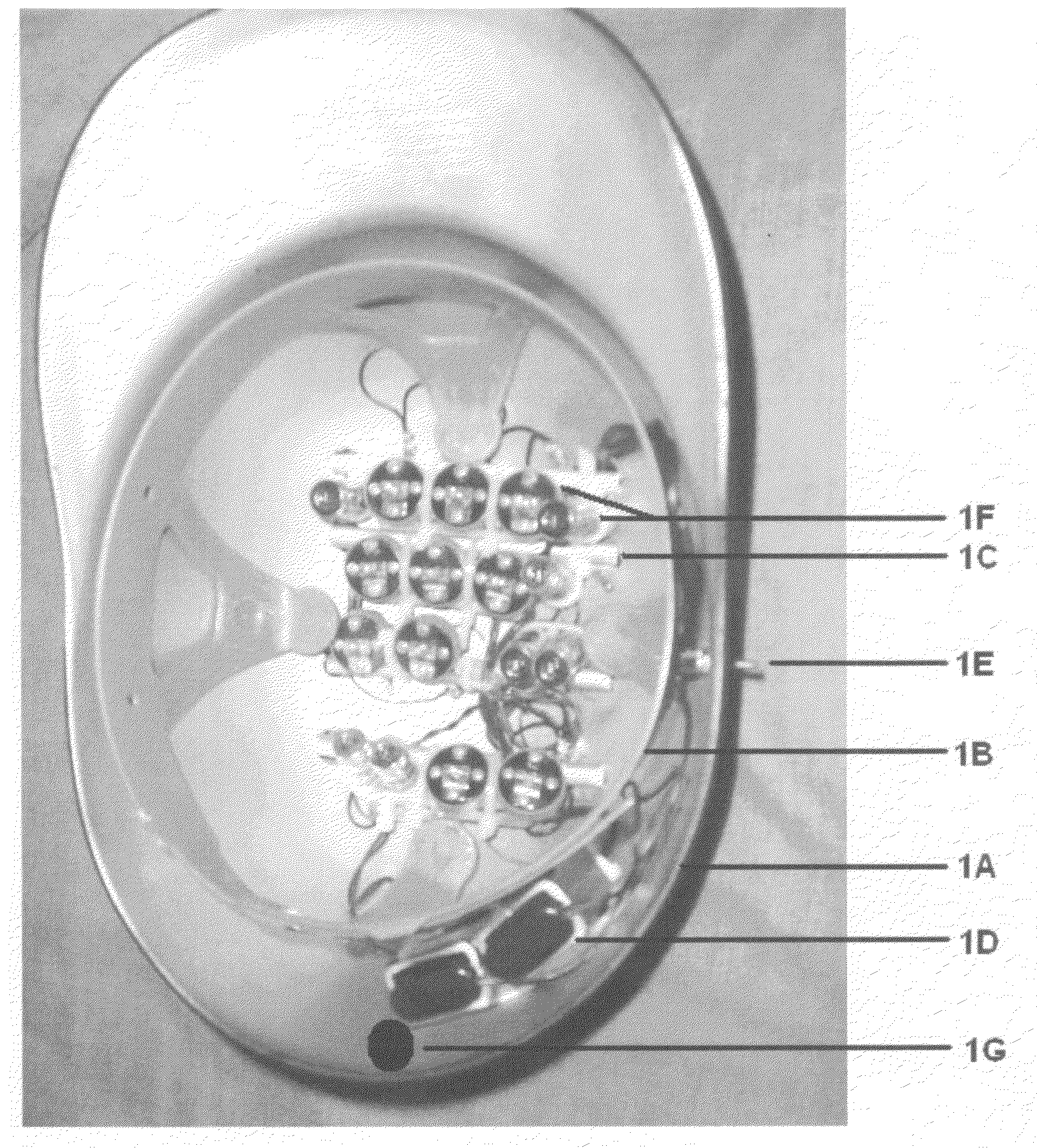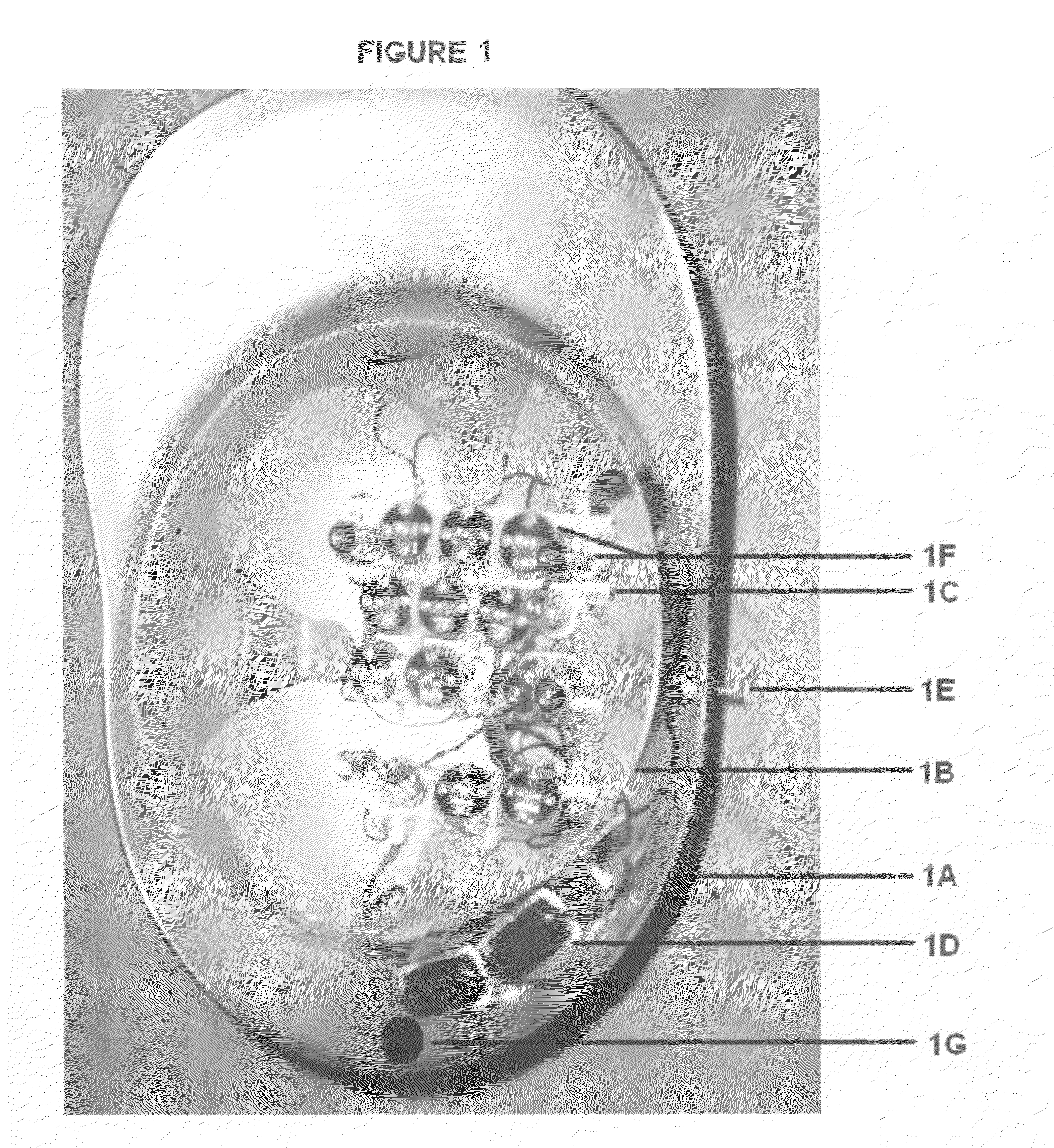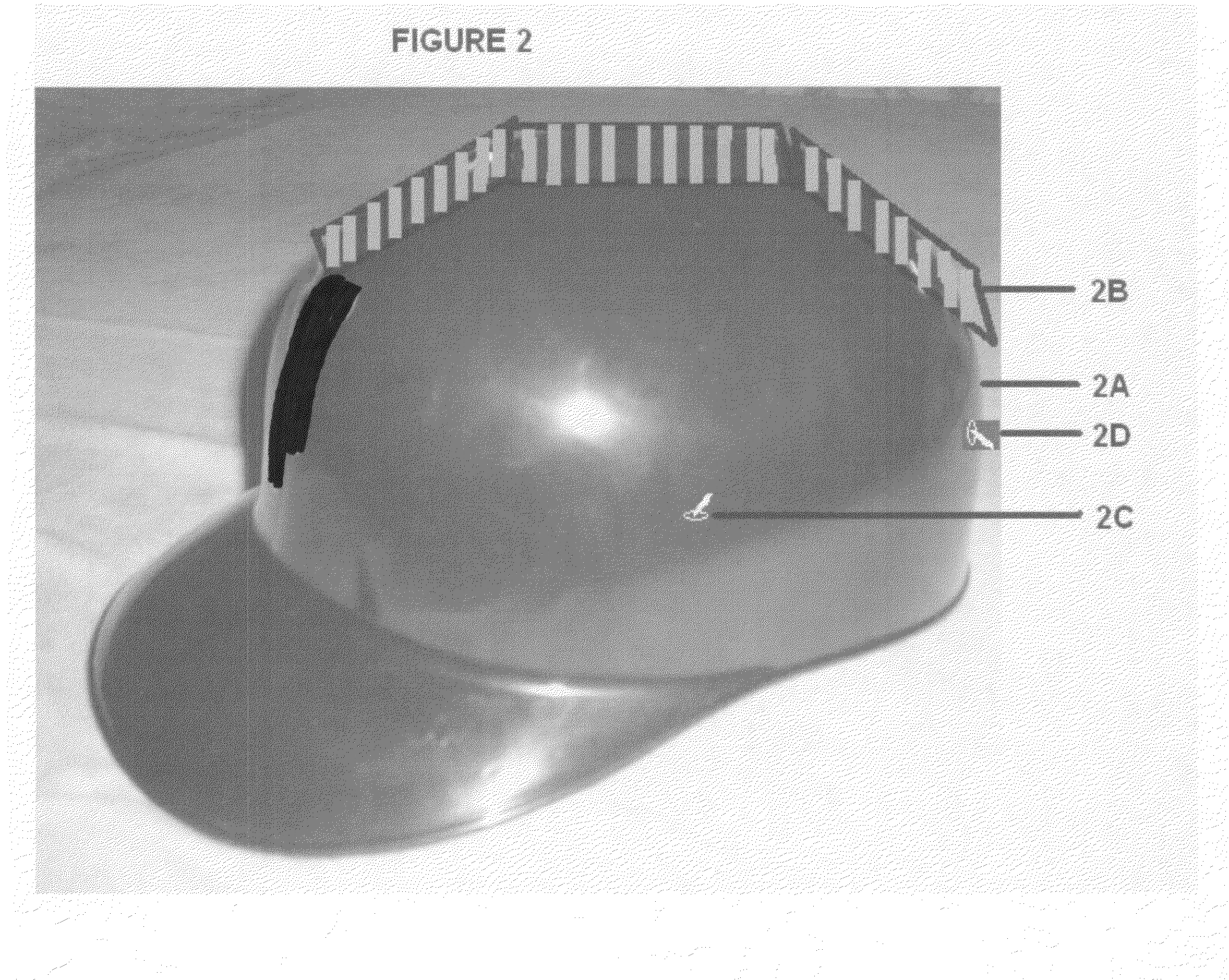The loss of hair and hearing has traditionally been a problem for a substantial percentage of the
population.
Whether the problem is alopecia (male pattern baldness) or
thinning hair, or damage to the
inner ear's delicate cilia due to loud noises or age, the individuals affected will generally find this to be
distressing and detrimental to their appearance and / or hearing function.
In addition, the loss of hair will often make individuals appear to be older than they are.
While these devices provided some degree of success, they have several drawbacks.
In particular, they often have an unnatural appearance, which allows them to be easily detected, even from a distance, by other individuals.
In order to make one of these devices appear to be the natural hair of the wearer, they must be constructed in a fairly expensive manner using real human hair, which is matched in color to the individual's remaining hair.
Unfortunately, many individuals cannot afford a high quality hairpiece such as this, and settle for a lower quality hairpiece fabricated from synthetic fibers.
In addition, hairpieces have another drawback in that they may be inconvenient to use in situations, such as swimming, where they may become damaged or loosened.
In this situation, the individual may become embarrassed due to the failure of the device.
In the case of hearing aids, they too may be inconvenient to use in situations, such as swimming where they will become damaged.
These more complicated solutions typically have the same drawbacks and problems as those associated with hairpieces.
In addition, they are often more expensive than conventional hairpieces.
Unfortunately, this method of treating
hair loss is expensive, often not covered by health insurance, and requires the use of medical professionals for the surgical
hair transplant procedure.
As a result, this procedure may not be available to a substantial portion of the public due to its high cost.
In particular, they are typically prescription medications which require the cost and inconvenience of visiting a physician to obtain a prescription.
In addition, the fact that they are prescription medications typically means that they will have a higher cost than non-prescription drugs.
Quite often, the use of this type of ingestible medications may result in serious health side effects, such as damage to the individual's liver, or other internal organs, or present other serious side effects.
This type of medication is often similar to prescription medications with the same cost
disadvantage of ingestible medications.
While some are now available as over-the-counter preparations, they typically have a reduced strength and are less effective than are their prescription counterparts.
It has been found that there are several disadvantages associated with this approach.
In particular, these are typically very large and expensive commercial devices, which are found in beauty salons and spas.
Over time, this represents a fairly expensive proposition for the individual, and typically requires a trained operator to be present and to conduct the treatment.
Another problem associated with hair is the loss of hair color (i.e., greying) that has the effect of making an individual appear to be older.
Unfortunately, this method of treatment has several disadvantages.
For example, as was the case with hairpieces, discussed above, it can be difficult to produce the proper hair color, which may make it obvious that the hair was dyed.
In addition, the dyed hair tends to fade over time, which results in re-appearance of the
grey hair and a persistent change in color.
Of course, this represents an ongoing expense and inconvenience to the individual.
Further, unless the dying process is performed by a trained individual, the results may be undesirable and unattractive.
This further increases the cost of hair dying due to the need to hire a trained professional to perform the process.
Unfortunately, the same problems encountered when attempting to deliver
laser light to the
scalp are also found when delivering LED non-coherent light.
In particular, the problems associated with large stationary devices found in hair salons and spas, as well as the inability to penetrate an individual's hair would be found in either category of
light emitting device, so it is recommended when using this
new device, to
cut the hair short for the treatments, so that the light can penetrate the
scalp.
While providing several methods of treating alopecia,
hair loss, and greying, the prior art has failed to provide an apparatus which is inexpensive to manufacture, has a minimum number of components, and can be used without leaving the individual's home or using costly commercial equipment and trained personnel.
Furthermore, LLLT has gained credibility and common usage in some parts of the world, such as Japan, the Scandinavian countries, and Australia, while in other parts of the world, such as North America, a lack of recognition of its
efficacy has remained.
Secondly, the cost of the device was affordable, and thirdly, the device was simple enough for the patient to use at home, avoiding repeated visits to the clinic.
 Login to View More
Login to View More  Login to View More
Login to View More 


